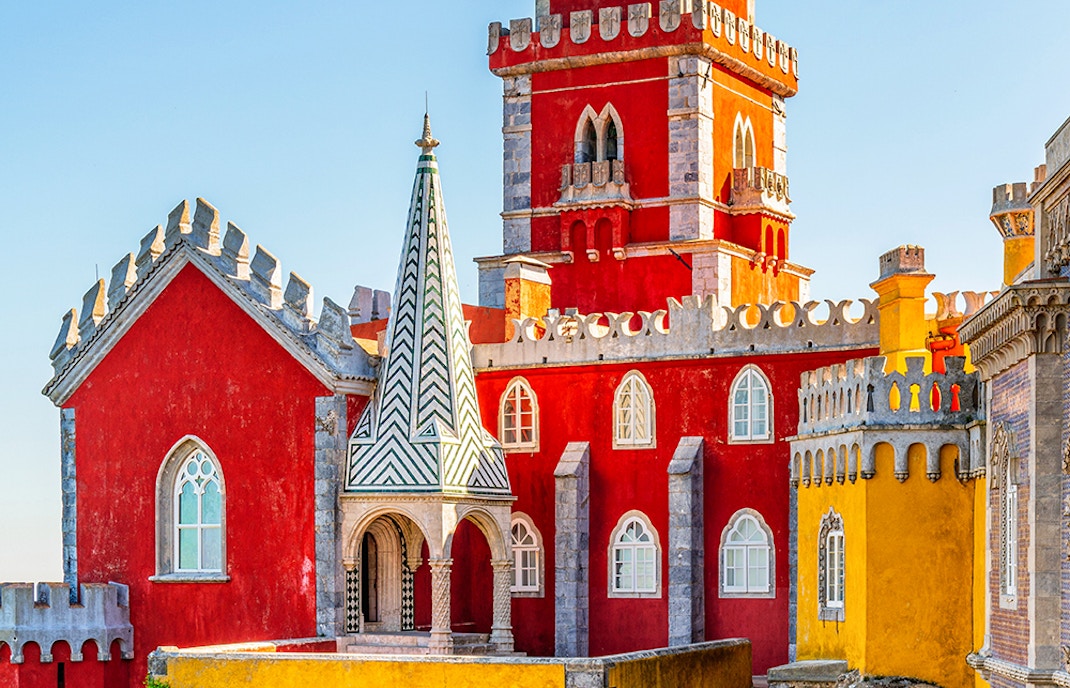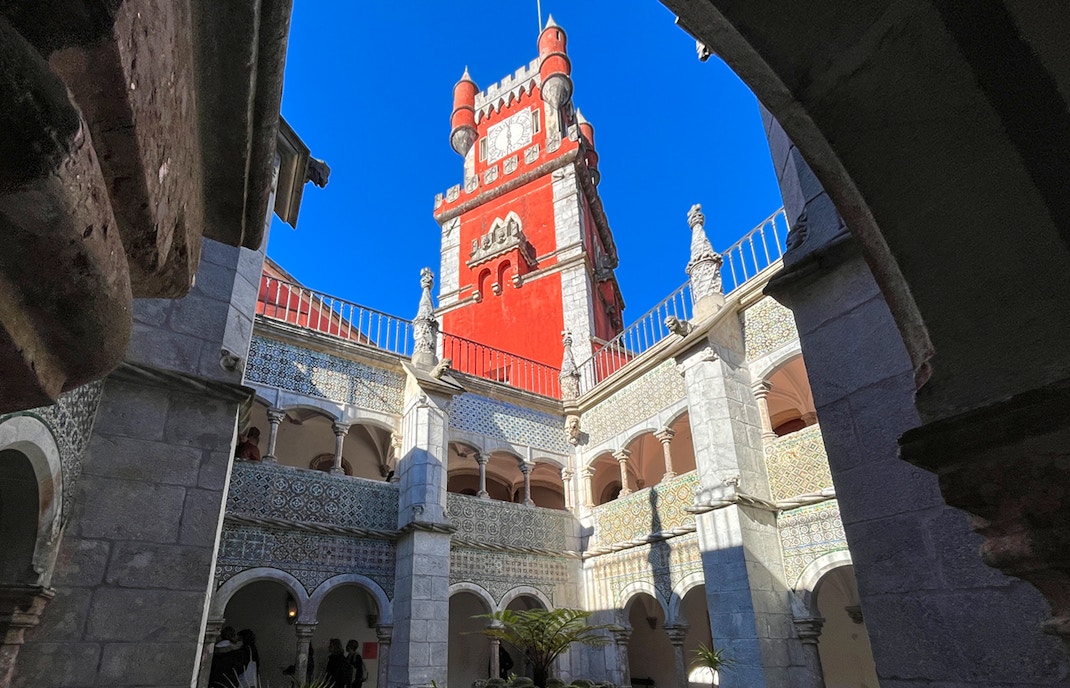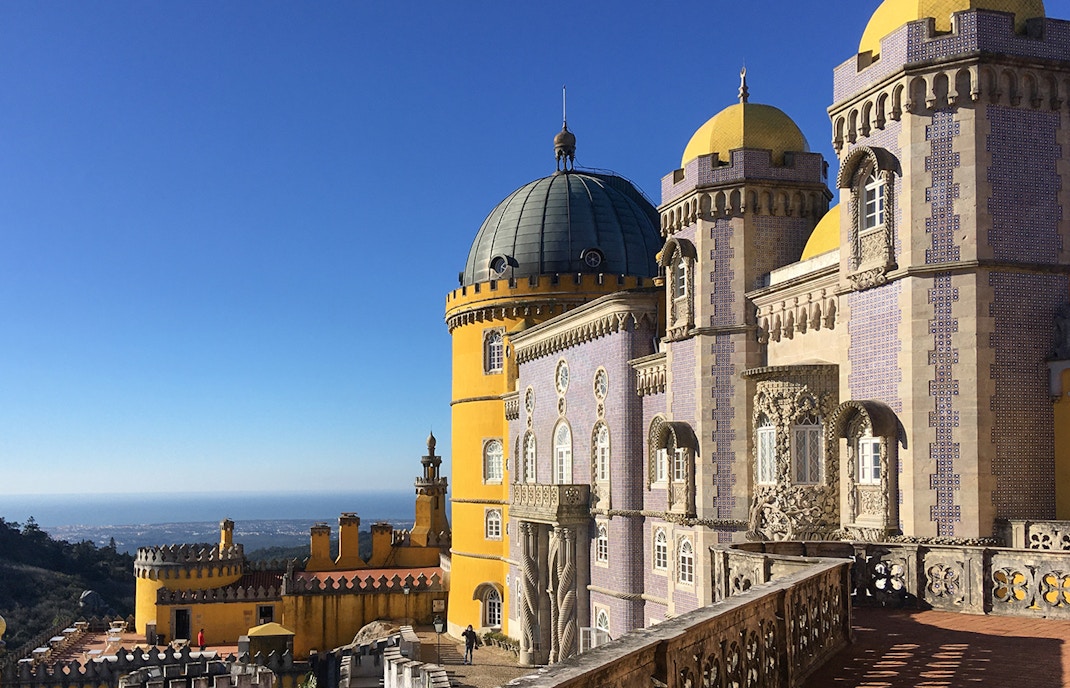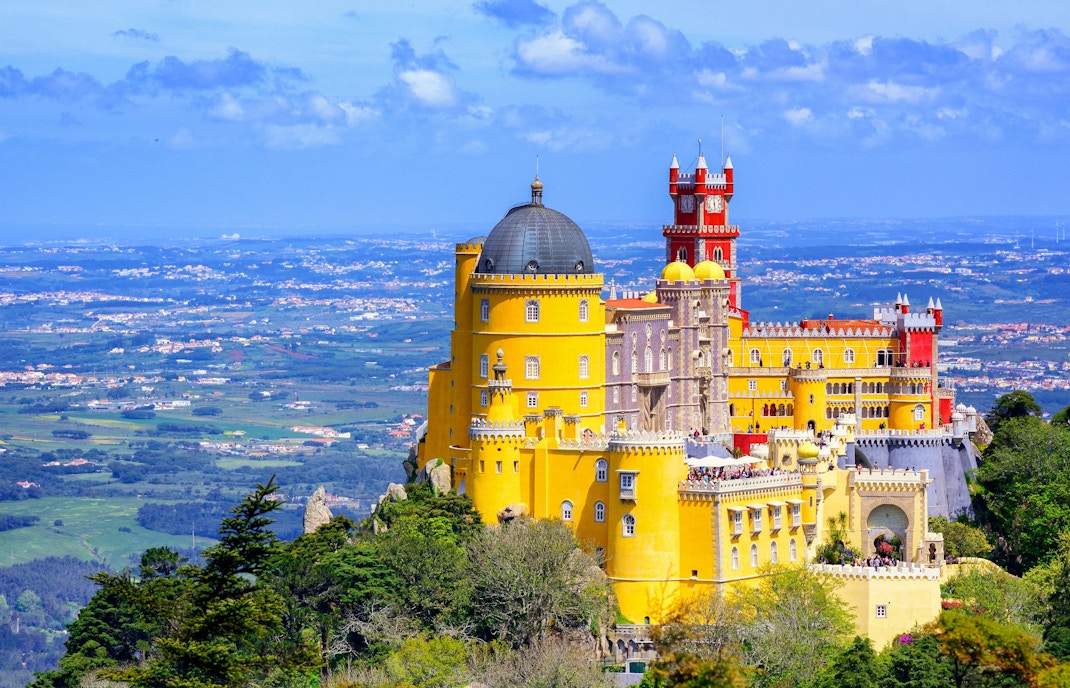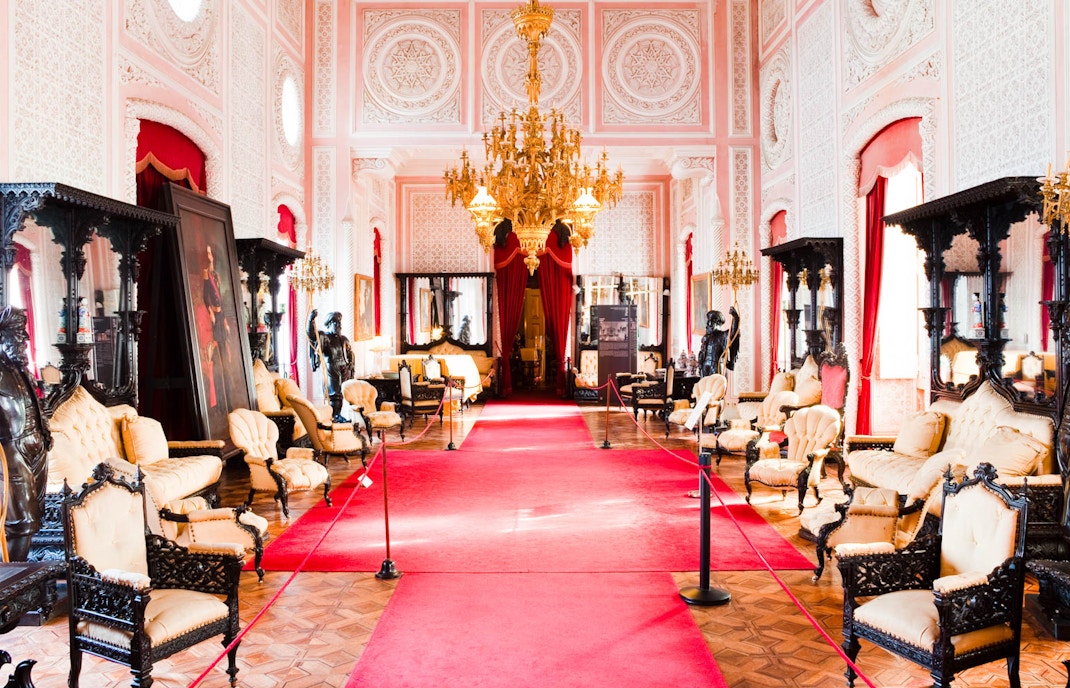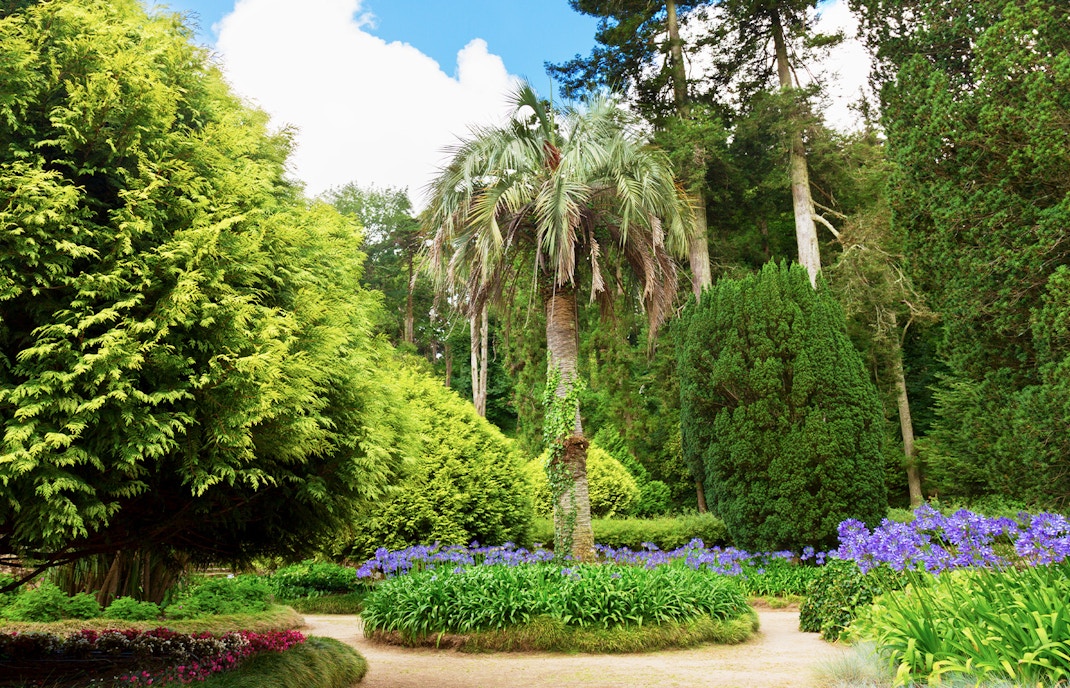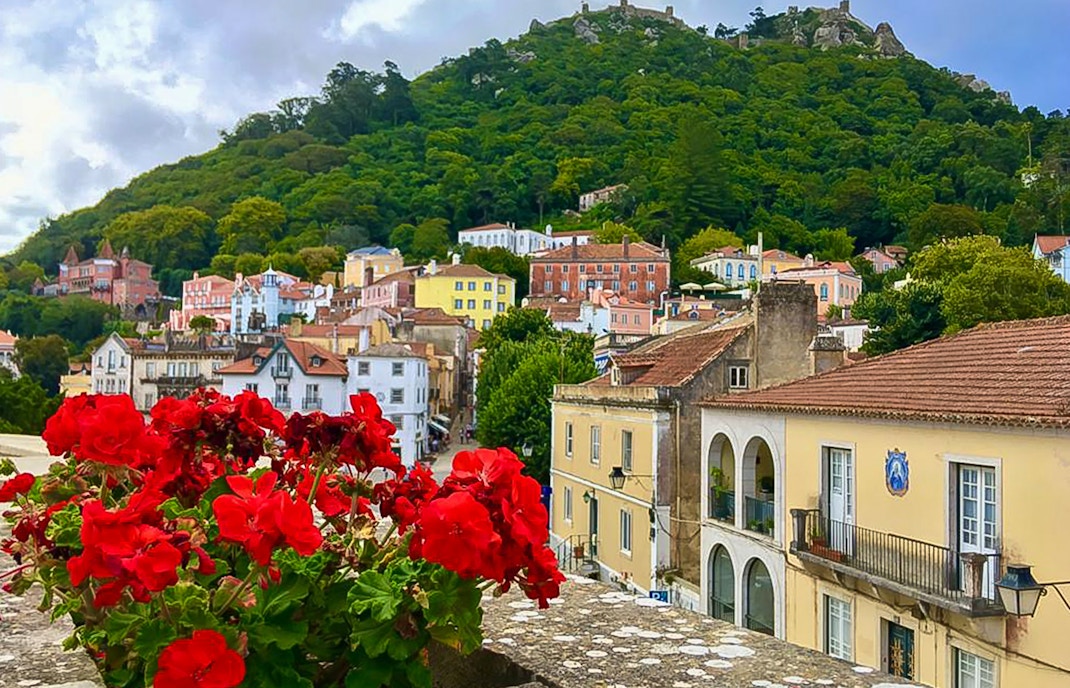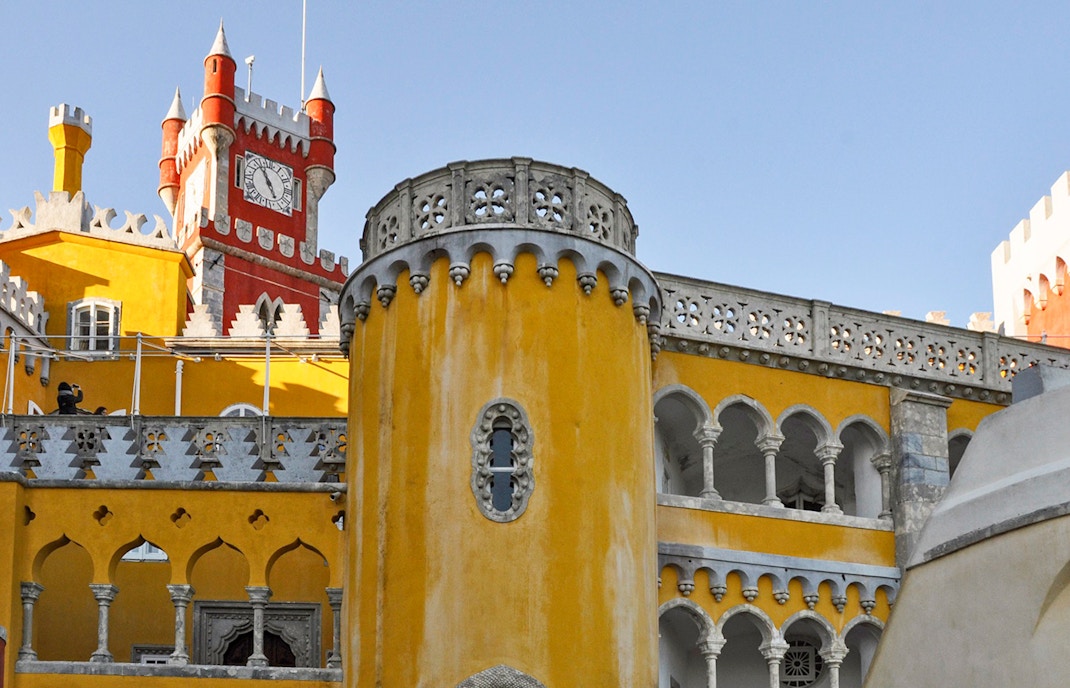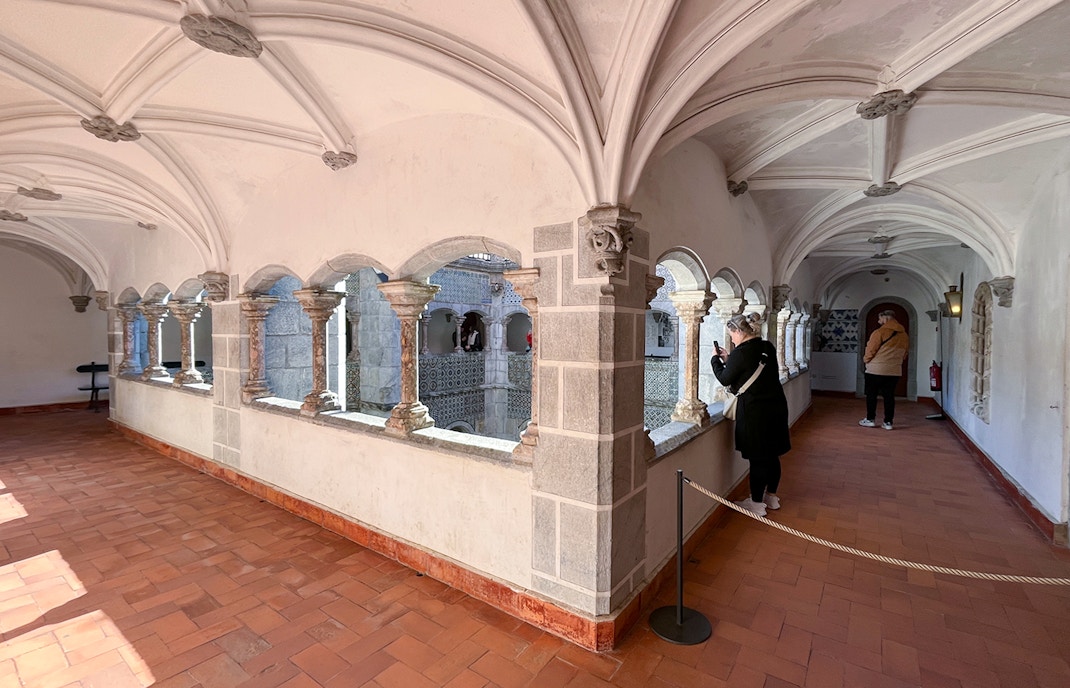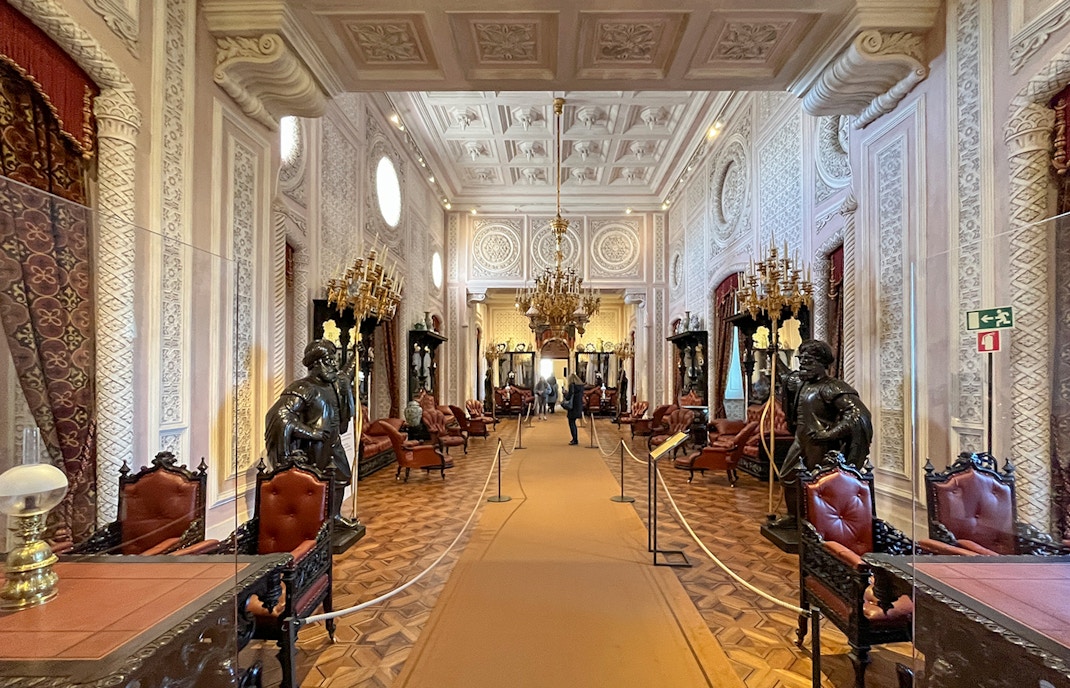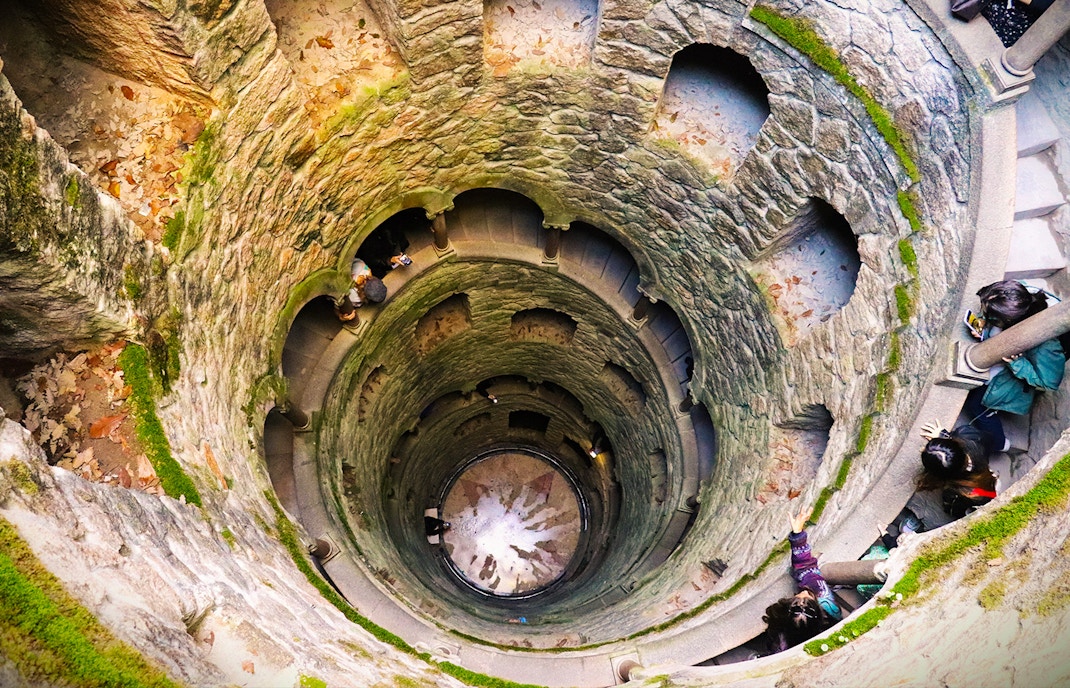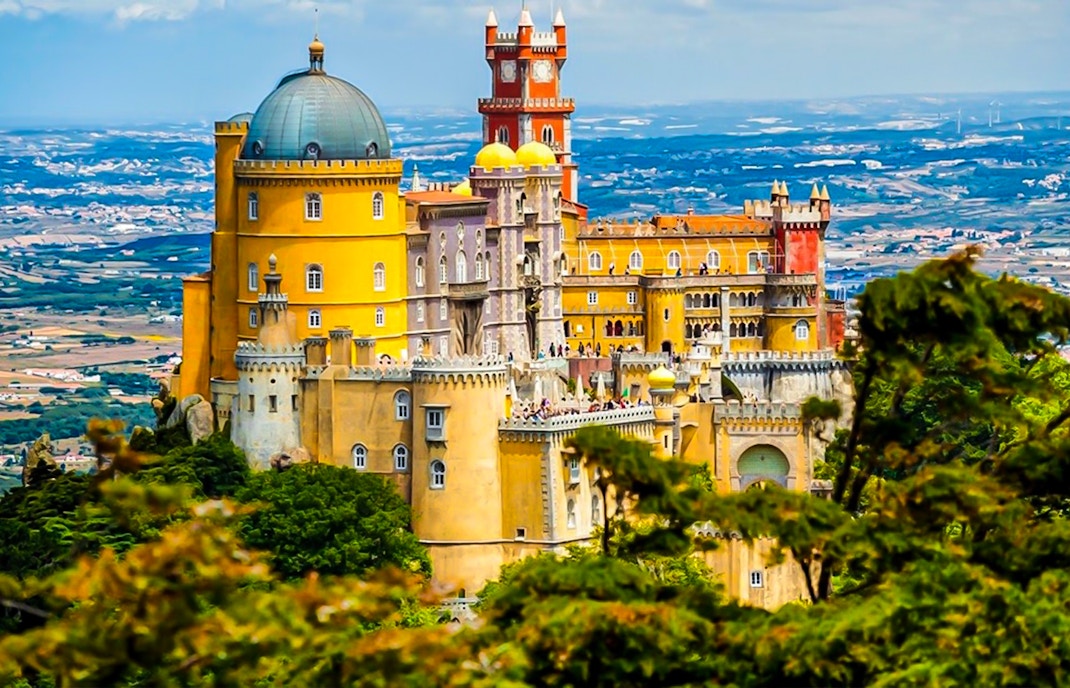The polychromatic Pena Palace looks like a fantasyland atop the Sintra Mountains. Painted in bright yellow and crimson red coupled with shades of blue tiles, a deep cornflower blue rooftop, and a light white stone ledge, it’s one of the most romantic monuments to exist.
The Islamic twist inspired by cornflower blue tiles with a tinge of yellow periwinkle makes it gaze-worthy. This palace is the perfect amalgamation of Neo-Gothic, Neo-Manueline, Neo-Moorish, and Islamic styles. This dreamy palace is reminiscent of the extravagant castle of Ludwig of Bavaria.
